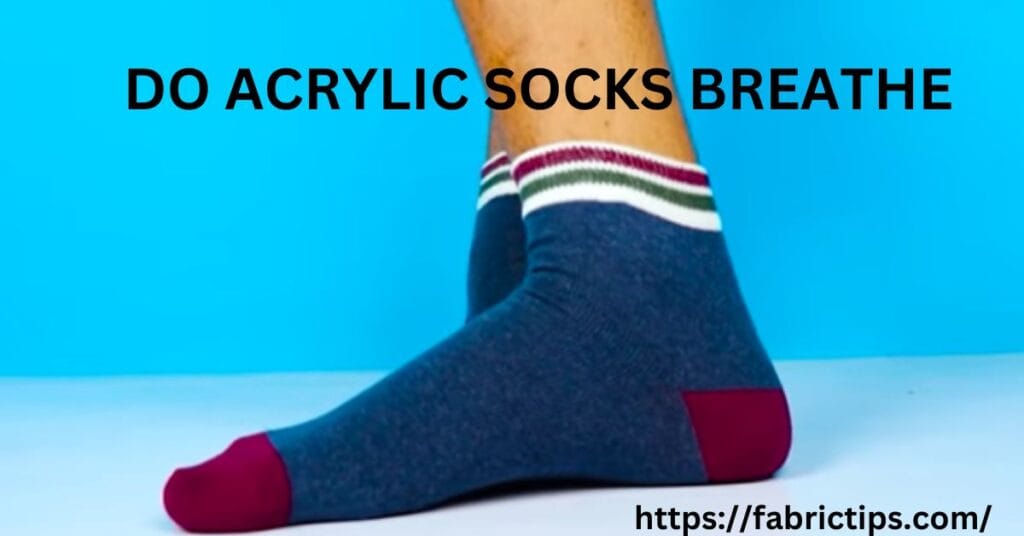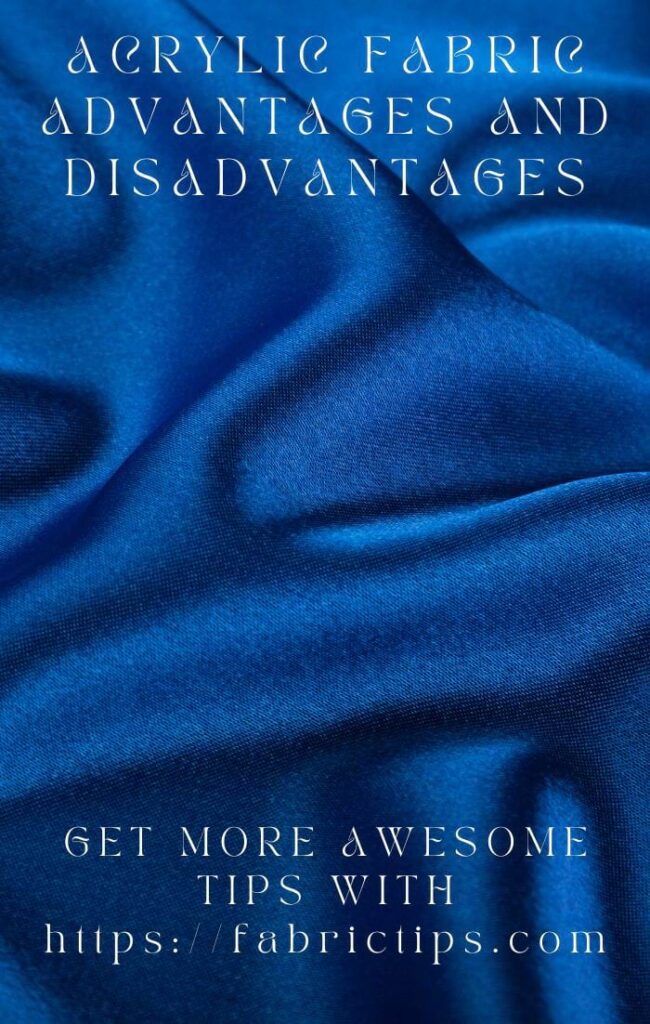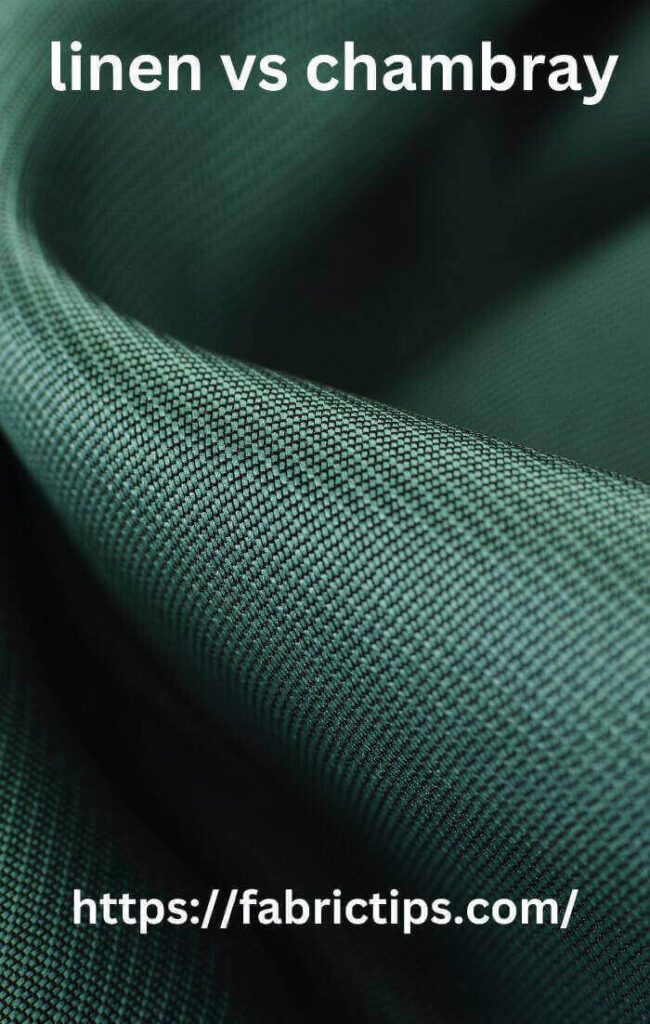Last Updated on December 13, 2025 by Wahid
Do acrylic socks breathe? The answer isn’t a simple yes or no. Here’s the key takeaway:
- Limited Breathability: Acrylic’s dense fiber structure hinders airflow, making it less breathable than natural fibers like cotton or wool.
- Sweaty Feet Potential: This limited breathability can trap moisture, leading to sweaty feet, discomfort, & potential odor. For those prone to sweaty feet, acrylic socks might not be the ideal choice.
However, acrylic socks offer several advantages:
- Affordability: They’re generally less expensive than natural fiber socks.
- Softness & Comfort: They have a soft, wool-like feel, making them comfortable for many people.
- Durability & Shape Retention: They tend to hold their shape well & resist pilling.
- Color Vibrancy: They come in a wide variety of vibrant colors.
- Easy Care: They’re generally machine washable and dry quickly.
Consider Your Needs
- For maximum breathability and sweat management, prioritize natural fibers like cotton or moisture-wicking synthetics. These are ideal for warm weather or high-intensity activities.
- If affordability, softness, and color variety are your top priorities & sweaty feet aren’t a major concern, acrylic socks might be a reasonable option.
- You can also consider them for low-impact activities in cool weather.
- You can use sock accessories such as socks safety pins and socks aid tools to easily pull-on socks without bending.
Ever felt your feet swimming in sweat after a long day? This comprehensive guide dives deep into the world of do acrylic socks breathe and compares them to other materials. Thus, we’ll equip you with the knowledge to choose the perfect pair for every occasion, keeping your feet happy and healthy.
Do Acrylic Socks Breathe? Unveiling the Truth for Sweaty Feet
When it comes to battling sweaty feet, sock choice is a crucial weapon. But do acrylic socks, a popular and affordable option, leave your feet feeling like they’re in a plastic prison? Let’s unveil the truth about acrylic breathability and its impact on moisture management.
[amazon box=”B004QF0TFQ” description=”none”]
The Fabric Lowdown: Acrylic’s Breathability Blues
Acrylic is a synthetic fiber made from a petroleum-based product. Unlike natural fibers like cotton or wool, acrylic doesn’t readily absorb moisture. Here’s why breathability suffers:
- Limited Moisture Absorption: Acrylic struggles to wick away sweat, leaving your feet feeling damp & uncomfortable.
- Dense Fiber Structure: The tight weave of acrylic fibers restricts airflow, preventing your feet from “breathing” effectively.
The Result: Sweaty Feet Blues
For those prone to sweaty feet, acrylic socks can be a recipe for discomfort. The trapped moisture can lead to:
- Unpleasant Odor: Bacteria thrive in moist environments, leading to unpleasant foot odor.
- Skin Irritation: Constant dampness can irritate sensitive skin, causing itching and redness.
- Fungal Growth: Sweaty feet create a breeding ground for fungus, potentially leading to athlete’s foot.
So, are acrylic socks a complete write-off? Not necessarily! Stay tuned for the next section where we explore the pros and cons of acrylic socks & compare them to other sock materials to help you find the perfect sweat-fighting pair!
[amazon box=”B07MPNKSML” description=”none”]
Acrylic Fabric: Unveiling the Science Behind the Softness
Now, before diving deeper into the breathability debate, let’s get acquainted with the science behind acrylic fabric. Understanding its composition will shed light on its strengths and weaknesses.
Born in a Lab: The Synthetic Origins of Acrylic
Unlike natural fibers like cotton or wool derived from plants or animals, acrylic is a synthetic material. It’s created through a scientific process called polymerization, where chemical compounds (acrylonitrile in this case) are linked together to form long chains, resulting in a soft, fiber-like material.
Key Characteristics of Acrylic:
- Softness & Comfort: Acrylic fibers are known for their soft, wool-like feel, making them comfortable against the skin.
- Durability & Shape Retention: Acrylic is a relatively strong and resilient fiber. Socks made with acrylic tend to hold their shape well after washing and resist pilling (formation of tiny fabric balls) compared to some natural fibers.
- Affordability: Synthetic production makes acrylic a cost-effective fabric choice, often reflected in the price of acrylic socks.
- Color Vibrancy: Acrylic dyes readily, offering a wide range of vibrant and long-lasting colors. This makes acrylic socks a popular choice for adding a pop of color to your wardrobe.
Drawbacks of Synthetic Origins:
While acrylic boasts some attractive qualities, its synthetic nature comes with a few drawbacks:
- Limited Breathability: As discussed earlier, the tight structure of acrylic fibers hinders airflow, impacting breathability.
- Moisture Wicking: Acrylic doesn’t readily absorb moisture, which can lead to sweaty feet & potential discomfort.
- Lower Sustainability: The production of acrylic relies on non-renewable resources like petroleum, making it a less eco-friendly option compared to natural fibers.
Yes, understanding these characteristics will help you decide if acrylic socks are the right choice for your sweaty feet dilemma. We’ll explore this further in the next section!
[amazon box=”B07F3FFTMK” description=”none”]
Battling the Sweat: Sock Materials for the Ultimate Foot Feats
Now that we’ve demystified acrylic and its breathability limitations, let’s explore the battleground of sock materials. Here, we’ll compare acrylic to its contenders to help you choose the perfect weapon against sweaty feet:
1. Cotton: Classic Comfort Contender
- Pros: Cotton is a natural fiber known for its breathability & moisture absorption. It allows your feet to “breathe” & help wick away sweat, keeping them feeling drier and fresher. Soft and gentle, breathable cotton socks are a good choice for everyday wear and sensitive skin.
- Cons: While comfortable, cotton socks can absorb too much moisture & take longer to dry, potentially leading to dampness during extended activity. They may also shrink or lose their shape over time.
2. Wool: Natural Champion for Moisture Wicking
- Pros: Merino wool, a finer type of wool, is a champion for moisture management. It absorbs sweat remarkably well while still maintaining a breathable feel. Wool fibers naturally inhibit bacterial growth, reducing odor. Merino wool socks are excellent for cold weather or high-intensity activities.
- Cons: Wool can be more expensive than cotton or acrylic. Some people find wool itchy, especially if not made from Merino wool.
[amazon box=”B07K6BW8CM” description=”none”]
3. Polyester & Synthetic Blends: Technological Triumph
- Pros: Modern synthetic fabrics like polyester are often treated with moisture-wicking technologies. They can effectively draw sweat away from the skin and dry quickly, keeping your feet feeling fresh. Polyester blends often combine the best of both worlds, offering breathability and durability.
- Cons: Some synthetic fabrics can lack the natural comfort of cotton or wool. They might trap heat more than natural fibers, potentially leading to discomfort in hot weather.
The Verdict: Acrylic vs. The Sock Squad
- For Everyday Wear with Moderate Activity: Cotton or cotton blends offer a good balance of breathability and comfort.
- For Sweaty Feet & High-Intensity Activities: Moisture-wicking synthetics or Merino wool socks for hiking are ideal for keeping your feet dry and comfortable.
- For Cold Weather: Merino wool reigns supreme for warmth and moisture management.
But wait, there’s more! The next section will delve into a guide for choosing the best sock material for different purposes!
[amazon box=”B0DDQCKX5J” description=”none”]
Sock It to Sweaty Feet & Other Woes: Material Matchmaker’s Guide
The perfect sock is like a superhero for your feet—providing comfort, support, and tackling specific needs. Worried about do acrylic socks breathe or not? But with a variety of materials available, choosing the right one can be overwhelming. Fear not, intrepid sock adventurer! This guide will be your trusty sidekick, helping you match the best sock material to your needs:
1. Moisture-Wicking Warriors: Battling the Sweat Monster
- Your Allies: When sweat is the enemy, prioritize moisture-wicking synthetic socks materials that excel at moisture management. Here are your champions:
- Merino Wool: Nature’s champion, Merino wool absorbs and wicks away sweat while remaining breathable. So, ideal for high-intensity activities or cold weather.
- Polyester Blends: Modern synthetics like polyester, often treated with moisture-wicking technology, effectively draw sweat away & dry quickly. Perfect for activewear or everyday wear.
- Bamboo: Bamboo fibers boast natural moisture-wicking properties and are a good eco-friendly alternative. Consider them for everyday wear or light activity.
2. Comfort Crusaders: Prioritizing Softness & Gentle Touch
- Your Allies: If supreme comfort is your quest, prioritize these gentle giants:
- Cotton: A classic choice, cotton is naturally soft and breathable, making it ideal for everyday wear or sensitive skin.
- Merino Wool: Don’t let its sweat-wicking prowess fool you! Merino wool is incredibly soft and gentle on the skin, perfect for sensitive feet.
- Cashmere: The epitome of luxury, cashmere offers unparalleled softness and warmth. However, cashmere socks are delicate and require special care.
[amazon box=”B0C8H8SN8N” description=”none”]
3. Durability Defenders: Standing the Test of Time
- Your Allies: For socks that endure wear and tear, consider these robust options:
- Nylon Blends: Nylon is known for its strength and elasticity. When blended with other materials like cotton or polyester, it offers a good balance of durability and comfort.
- Acrylic: While not the most breathable, acrylic offers decent durability and shape retention at an affordable price point. They can be a good choice for everyday wear where sweat isn’t a major concern.
- Wool Blends: Combining wool with synthetic fibers like nylon can create socks that are both warm and durable. This is a great option for hiking or work boots.
Remember: The ideal sock material often involves a sweet spot between these categories. Consider your activity level, climate, and personal preferences to find the perfect match.
Up next, we’ll delve deeper into the breathability battle between cotton and acrylic, helping you make an informed decision!
Cotton vs. Acrylic: Breathability Battleground & Scientific Smackdown
When it comes to keeping your feet cool and dry, the battle between cotton and acrylic socks rages on. Both materials have their strengths and weaknesses, but which one reigns supreme in the breathability arena? Let’s break down the science behind airflow and declare a victor (or perhaps a surprising tie) in this sock showdown!
[amazon box=”B0D14Z8KLV” description=”none”]
Cotton: The Natural Breather
Cotton is a natural fiber derived from the cotton plant. Its breathability prowess stems from its unique structure:
- Hollow Fibers: Cotton fibers are naturally hollow, allowing air to circulate freely through the fabric. This promotes airflow and helps your feet breathe.
- Moisture Absorption: Cotton readily absorbs moisture (sweat) from your skin. This moisture then evaporates into the air, creating a cooling effect.
Benefits of Cotton Breathability:
- Reduced Sweaty Feet: Cotton’s ability to wick away sweat keeps your feet feeling drier and fresher.
- Odor Control: By preventing excessive moisture buildup, cotton helps minimize the growth of odor-causing bacteria.
- Comfort in Warm Weather: Cotton’s breathability makes it a comfortable choice for hot weather or everyday wear.
Acrylic: Synthetic Contender
Acrylic, a synthetic fiber derived from petroleum, presents a different story:
- Dense Fiber Structure: Unlike cotton’s hollow fibers, acrylic fibers are tightly packed, restricting airflow and hindering breathability.
- Limited Moisture Absorption: Acrylic struggles to absorb moisture effectively. Sweat can become trapped against the skin, leading to a damp and uncomfortable feeling.
Drawbacks of Acrylic Breathability:
- Increased Sweaty Feet: The lack of moisture absorption can exacerbate sweaty feet, causing discomfort and odor.
- Potential for Skin Irritation: Constant dampness can irritate sensitive skin.
- Less Ideal for Warm Weather: Acrylic’s poor breathability can make your feet feel hot and uncomfortable in warm temperatures.
Verdict: Cotton Takes the Breathability Crown
Based on the scientific properties, cotton emerges as the clear winner in the breathability battle. Its hollow fibers and moisture-wicking capabilities make it a far superior choice for combating sweaty feet & promoting foot comfort, particularly in warm weather.
However, consider these additional factors:
- Activity Level: For low-intensity activities, acrylic socks might be tolerable. For high-intensity workouts, cotton or moisture-wicking synthetics are superior.
- Durability: Acrylic often boasts better durability and shape retention than cotton.
- Price: Acrylic socks are generally more affordable than cotton.
The takeaway? Choose the material that best suits your needs and preferences. For maximum breathability and sweat management, cotton reigns supreme. But if affordability, durability, or a specific activity dictate, acrylic might be a reasonable alternative.
Acrylic Fabric Socks: Balanced Look at the Pros and Cons
Acrylic socks are a popular choice for many reasons. They’re often affordable, soft, and come in a wide variety of colors. But before you stock your drawer solely with acrylic pairs, let’s weigh the advantages and disadvantages to ensure they’re the right fit for your needs.
Pros of Acrylic Fabric Socks:
- Affordability: One of the biggest advantages of acrylic socks is their price point. They’re generally less expensive than socks made from natural fibers like cotton or wool.
- Softness & Comfort: Acrylic fibers have a soft, wool-like feel, making them comfortable to wear. They can be a gentle option for people with sensitive skin (though some may find them less breathable than cotton).
- Durability & Shape Retention: Acrylic socks tend to hold their shape well after washing and resist pilling (formation of tiny fabric balls) compared to some natural fibers.
- Color Vibrancy: Acrylic dyes readily, offering a vast array of vibrant & long-lasting colors. This makes them a great choice for adding a pop of color to your wardrobe.
- Easy Care: Acrylic socks are generally machine washable and dry quickly, making them a low-maintenance option.
Cons of Acrylic Fabric Socks:
- Limited Breathability: As discussed earlier, the tight structure of acrylic fibers hinders airflow. This can lead to sweaty feet, especially during warm weather or high-intensity activities.
- Moisture Wicking: Acrylic doesn’t readily absorb moisture, which can leave your feet feeling damp & uncomfortable. This trapped moisture can contribute to odor and potential skin irritation.
- Lower Sustainability: The production of acrylic relies on non-renewable resources like petroleum, making it a less eco-friendly option compared to natural fibers like cotton or bamboo.
- Warmth (or Lack Thereof): While some might find acrylic socks comfortable in cool weather, they don’t provide much insulation for very cold temperatures.
[amazon box=”B0DBRBK8FT” description=”none”]
Making an Informed Decision:
Acrylic socks offer a combination of affordability, softness, and style. However, their breathability limitations can be a concern, especially for those prone to sweaty feet. Consider these factors when choosing:
- Activity Level: For low-impact activities, acrylic socks might suffice. For high-intensity workouts or warm weather, prioritize cotton or moisture-wicking synthetics.
- Climate: If you live in a warm climate or experience sweaty feet, opt for more breathable materials like cotton.
- Personal Preference: If comfort and affordability are your top priorities, acrylic socks might be a good choice. However, if breathability and sweat management are crucial, consider other materials.
However, by understanding the pros and cons of acrylic socks, you can make informed decisions about your sock drawer, ensuring your feet stay comfortable and healthy!
Acrylic Socks: Burning FAQs Answered!
Acrylic socks are a popular choice, but doubts can linger. Let’s address some frequently asked questions on how acrylic socks breathe to ensure you get the most out of your acrylic socks:
How do I care for acrylic socks?
Great news! Acrylic socks are generally easy to care for. Here’s what to know:
– Machine Washable: Most acrylic socks can be machine washed on a gentle cycle with warm water. However, always check the care label for specific instructions.
– Tumble Dry Low: To maintain shape and prevent shrinkage, opt for tumble drying on low heat or air drying.
– Avoid Harsh Detergents: Stick to gentle detergents to preserve the softness of the fibers. Explore gentle detergents for synthetic fabrics now.
– Avoid Harsh Stains: Acrylic doesn’t readily absorb stains, but for stubborn ones, pre-treat with a gentle stain remover before washing.How durable are acrylic socks?
Acrylic socks are known for their decent durability. They tend to hold their shape well after washing and resist pilling (formation of tiny fabric balls) compared to some natural fibers. However, durability can vary depending on the quality and thickness of the sock.
Are acrylic socks eco-friendly?
Not particularly. Acrylic is a synthetic fiber derived from petroleum, a non-renewable resource. The production process also uses significant amounts of energy and chemicals. Compared to natural fibers like cotton or bamboo, acrylic has a higher environmental footprint.
Do acrylic socks shrink?
Acrylic socks can shrink slightly, especially if washed in hot water or dried on high heat. Always follow the care label instructions to minimize shrinkage.
Are acrylic socks good for cold weather?
While acrylic offers some warmth, it doesn’t provide the same level of insulation as wool or thick cotton socks. For very cold weather, choose socks made from those materials for better warmth retention.
Can acrylic socks cause allergies?
Acrylic itself is generally hypoallergenic and shouldn’t cause allergies. However, some people might be sensitive to dyes or other chemicals used in the manufacturing process. If you experience irritation, opt for natural fiber socks or choose socks labeled “hypoallergenic.” Check out Woolite Sanitized Sock Saver Wash Bag.
Ultimately, with this knowledge in hand, you can make informed decisions about using and caring for your acrylic socks!
Summarizing On “Do Acrylic Socks Breathe?”
Your socks drawer should reflect your needs and preferences. Hence, by understanding on do acrylic socks breathe, the limitations of acrylic, & its other qualities, you can make informed decisions to keep your feet comfortable and happy!


